What's New
Displaying results 4001 - 4010 of 4052
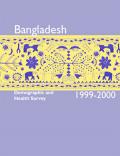
Resource | Publications,
The 1999-2000 Bangladesh Demographic and Health Survey (BDHS) is a nationally representative survey that was implemented by Mitra and Associates under the authority of National Institute for Population Research and Training (NIPORT) from November 1999 to March 2000. The 1999-2000 BDHS is a follow-on to the 1993-1994 and 1996-1997 BDHS surveys and provides updated estimates of the basic demographic and health indicators covered in the earlier surveys.
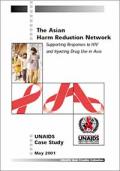
Resource | Publications,
Those working in the field of prevention of drug use and HIV/AIDS are very well aware that no simple interventions can solve the problem in a short period of time. Drug users are a highly vulnerable group; in many countries, the legal and political environment makes them hard to reach for preventive interventions. Many of them are very poor, a factor that contributes to their vulnerability. Health and social services often are not equipped to address their needs. Drug users’ rights are frequently violated, and in several communities drug users are used as scapegoats for many social evils. Risk-reduction measures are successful if we encourage legal and political environments in which we can deliver interventions, if we provide the necessary health and rehabilitation facilities, if we address poverty, and if we work on the tremendous negative image that many people attribute to drug users. Over the past few years, UNAIDS, particularly the Asia-Pacific Intercountry Team, and the Asian Harm Reduction Network have
focused on reducing drug users’ vulnerability.

Resource | Publications,
AIDS is now the greatest threat to child development in many parts of the world. In responding to HIV/AIDS, however, the children affected by the epidemic, especially those indirectly affected, are too often the forgotten ones. There is already a significant body of literature on the care and support of children living with HIV/AIDS, but most of this focuses on children in developed countries. The needs of children who are affected through the sickness and death of parents, guardians, siblings and others in the community, however, have not been seen as a priority – even though the number of such children dwarfs the number actually infected and will continue to do so.
This paper will examine the situation of children affected by HIV/AIDS who live in poor countries, and will analyse the responses of households, communities, programming organisations, governments and donors.

Resource | Publications,
As reported by the Joint United Nations Program on HIV/AIDS (UNAIDS) and the World Health Organization (WHO) in December 2000, threatening rates of transmission of HIV are being seen in much of Africa as well as in Asia. HIV has already killed more than 20 million people worldwide since the beginning of the epidemic. It has infected more than 36 million people; almost half of them were women.
It is generally agreed upon that failing to address the issues of PMTCT (prevention of mother-to-child transmission) dramatically increases the morbidity and mortality among children affected by HIV/AIDS. Thus, PMTCT has become the priority worldwide for reducing the numbers of HIV-infected children.
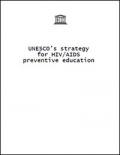
Resource | Publications,
For the first time there are some signs that the incidence of HIV may be stabilizing in sub-Saharan Africa. New infections in 2000 totalled an estimated 3.8 million, compared with 4 million in 1999. However, this may change if rates go up in countries where they are still relatively low. The total number of Africans living with HIV or AIDS is now 25.3 million. In eight African countries, at least 15% of adults are infected. Here AIDS will claim the lives of around a third of today’s 15-year-olds. During 2000, millions of Africans infected in earlier years began falling ill, and it is estimated that 2.4 million people died of HIV-related causes, compared with 2.3 million in 1999. In Botswana, 35.8% of adults are now infected with HIV, while in South Africa, 19.9% are infected, up from 12.9% just two years ago.
Much is still not known about the epidemic – and much is yet to be learned. But enough is known to act – and we know we must act immediately: to offer treatment, to provide care and maintain institutions in an environment that respects the human rights of all. No country is an island unto itself – the whole world is affected. Action is needed to stop the spread and make for longer, more productive and more dignified lives for the infected and affected. Action is needed to kindle hope and demonstrate compassion. In particular: prevention programmes that are country driven and rooted in communities do work and must be put to work. Preventive education and communication for change in behaviour must be intensified.

Resource | Publications,
The present HIV/AIDS surveillance system in Malaysia is based on reporting of infections/cases and HIV testing of women attending antenatal clinics, blood donors, STD patients and tuberculosis inpatients as part routine HIV screening activities.
In 2000, among 285,000 antenatal women tested, only 0.03% were found to be HIV-positive. Among 330,000 blood donors tested in 1999, only 0.01% were positive. There is evidence that HIV prevalence among STD patients and female sex workers (FSW) in Kuala Lumpur is increasing. HIV prevalence rates among FSW and STD patients in selected urban areas are beginning to exceed 5%. However the average HIV prevalence throughout the country in these high-risk behaviour groups is less than 5%. There are very few behavioural data related to HIV/AIDS and STIs.
The number of current HIV infections has been estimated to be 42,000 in 2000 (range: 30,000-81,000). The population sizes of HIV-risk behaviour groups and the representativeness of surveys needs to be reassessed.
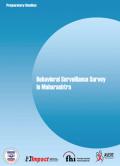
Resource | Publications,
The summary report gives the key findings and conclusions of the HIV/AIDS Behavioral Surveillance Survey (BSS), which was funded by United States Agency for International Development (USAID), and conducted by ORG Center for Social Research (ORG CSR), with technical assistance from Family Health International (FHI). The study was conducted between October 1999 and March 2001 in selected areas of Maharashtra, including urban areas of Mumbai, Pune, Thane, and both urban and rural areas of Sangli. The main objective of the Behavioral Surveillance Survey was to obtain trend data on HIV-related risk behaviors among selected population groups.
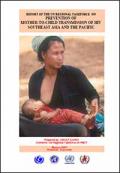
Resource | Publications,
On behalf of the UN Regional Taskforce on Prevention of Mother-to-Child Transmission of HIV, UNICEF EAPRO convened the 3rd Regional Taskforce meeting on 7-8 March 2001 in Bangkok. The objectives of the meeting were to:
1. Update country situations on PMCT
2. Update and share the latest technical and scientific data on the use of ARV, infant feeding options and existing guidelines, role of UNFPA in PMTCT and the evaluation results of VCT in Thailand
3. Amend the Terms of Reference of the Regional Taskforce and
4. Discuss upcoming PMCT global and regional events
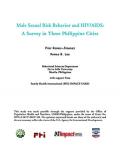
Resource | Publications,
The main objective of the survey was to assess the level of HIV/AIDS risk behavior among general population males in three major urban areas in the Philippines particularly Quezon City, Cebu City, and Davao City. These cities were part of the Department of Healths National HIV Sentinel Surveillance System.
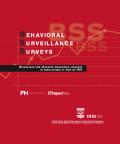
Resource | Guidelines,
Behavioral surveillance surveys (BSS) have been shown over several years to make an important and useful contribution to informing the national response to HIV. These surveys use reliable methods to track HIV risk behaviors over time as part of an integrated surveillance system which monitors various aspects of the epidemic.
As interest and experience in BSS has grown, demand has surfaced for all the available tools to be gathered into a single document. These guidelines meet that demand. They are designed to provide a “one-stop” reference to help public health officials set up and manage systems that provide reliable trends in HIV risk behaviors. Information is also provided to help those who will be implementing the surveys themselves.





